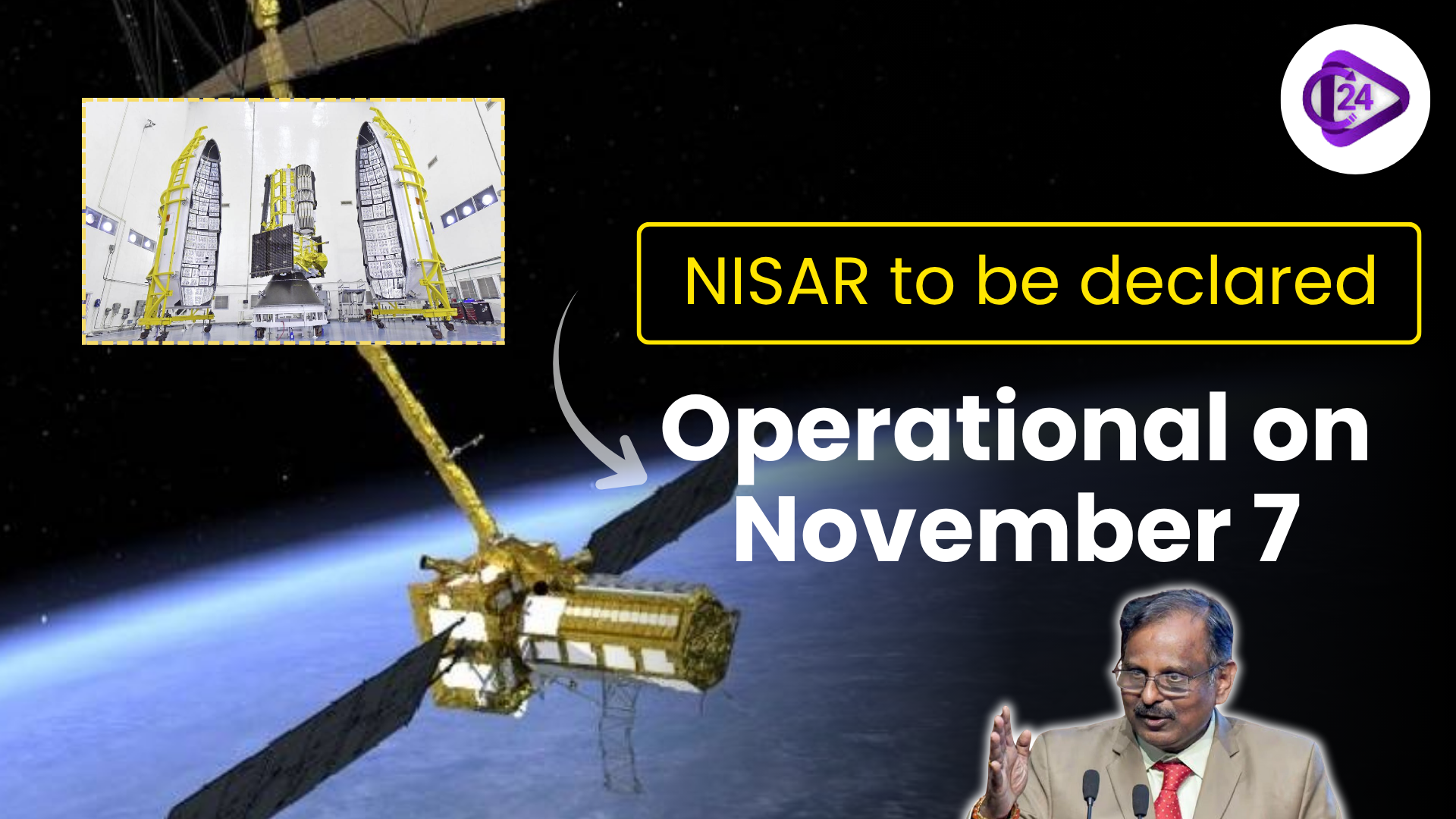
NISAR (NASA-ISRO Synthetic Aperture Radar), the joint Earth observation mission, is to be announced as operational on November 7. Having been jointly developed by NASA and ISRO, NISAR is the most sophisticated Earth-monitoring satellite in the world, equipped with a pair of radar systems (L-band and S-band). Upon successful calibration and testing, it will survey the changes (land, ice, and vegetation) of the Earth every 12 days. The satellite will be used to offer useful information in the monitoring of natural disasters, soil moisture, deforestation, and climate change. This is a significant milestone in India-US space cooperation, enhancing global environmental monitoring and advancing scientific research worldwide.
What is NISAR, and key factors of NISAR?
-
Fully Spelt: The NISAR acronym was used to denote the NASA-ISRO Synthetic Aperture Radar.
-
Partnership: NASA-ISRO (USA-India) joint mission.
-
Purpose: To map the surface of the Earth and track the changes of its ecosystems, natural disasters and ice melting, and climate effects.
-
Construction Beginning: The start of the project is 2014, with a contractual partnership.
-
Launch Date: Launch successful on July 30, 2025.
-
Operational Date: Will be fully operational by November 7, 2025.
-
Technology: It has two types of radar systems, L-band (NASA) and S-band (ISRO).
-
Orbit Type: It works in a near-polar, sun-synchronous orbit.
-
Significance: First satellite to provide stable worldwide radar images with a period of 12 days, improving climate, agriculture, and disaster management research studies.
Conclusion
The NISAR joint venture between the ISRO and NASA is a historic milestone in space co-operation. By launching operations on November 7, NISAR will transform Earth observation and offer accurate data about climate change, natural disasters, and ecosystem changes, empowering the global community to work in the direction of sustainable environmental observation and scientific growth.



 Amit Shah Pays Tribute to Mahatma Jyotiba Phule on his Death Anniversary
Amit Shah Pays Tribute to Mahatma Jyotiba Phule on his Death Anniversary NDA Sweeps Bihar Assembly Election 2025 BJP Leads with Strongest Mandate
NDA Sweeps Bihar Assembly Election 2025 BJP Leads with Strongest Mandate First-Ever Subsea Tunnel in Kerala: Reduce Travel Costs & Ease Traffic
First-Ever Subsea Tunnel in Kerala: Reduce Travel Costs & Ease Traffic India’s Demographic Dividend as a Time Bomb: A Call for Action
India’s Demographic Dividend as a Time Bomb: A Call for Action Free Bus Schemes Help, But Rural India Pays More to Travel
Free Bus Schemes Help, But Rural India Pays More to Travel






